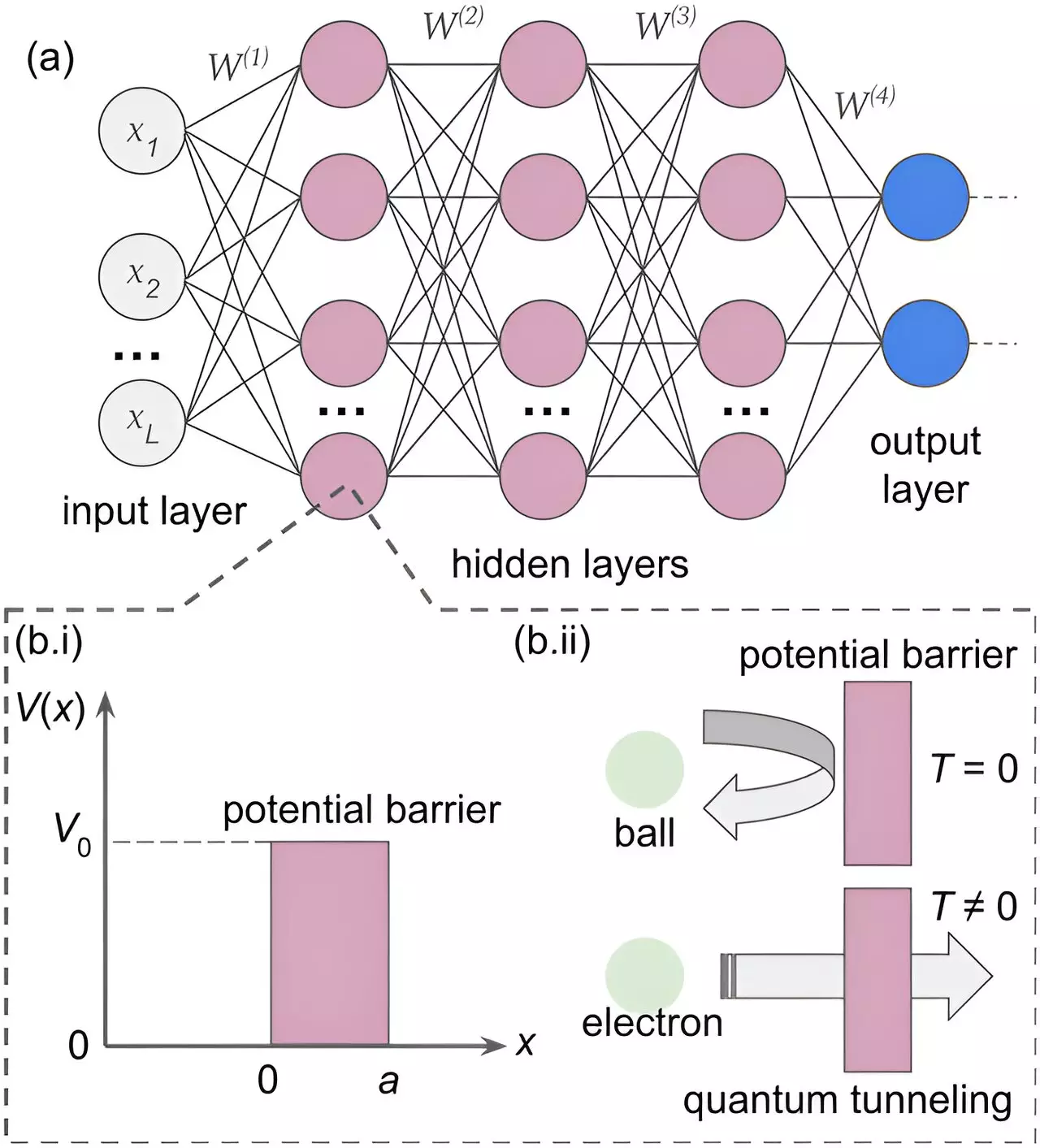The realm of optical illusions, quantum mechanics, and neural networks may initially seem disconnected, but a recent study published in APL Machine Learning delves into the fascinating overlap among these seemingly unrelated fields. The research uncovers the utilization of “quantum tunneling” to create a neural network capable of perceiving optical illusions in a manner akin to human observation. This innovative neural network not only successfully replicates human recognition of renowned illusions like the Necker cube and Rubin’s vase but also outperforms larger traditional neural networks typically deployed in computer vision tasks.
Optical illusions have long captivated the human mind by tricking our brains into perceiving images that may deviate from reality. While the mechanisms behind these illusions remain enigmatic, studying them offers valuable insights into how our brains function and occasionally malfunction, as seen in conditions like dementia or during extended space missions. As researchers in artificial intelligence aim to replicate and analyze human vision using AI technologies, optical illusions present a unique challenge. While contemporary computer vision systems can identify complex objects such as artistic paintings, they often struggle to interpret optical illusions effectively.
The study introduces quantum physics into the realm of neural networks to address the inherent difficulties posed by optical illusions. In the human brain’s processing of information, a filtration process discerns valuable data from irrelevant information. Neural networks mimic this cognitive function through layers of artificial neurons that store and categorize data based on their relevance. Analogous to neurons responding to signals from neighboring cells, the concept of quantum tunneling in quantum mechanics enables neurons in the neural network to surpass obstacles and activate even in improbable scenarios.
The discovery of quantum tunneling in the early 20th century revolutionized scientific understanding by elucidating phenomena like radioactive decay that defied classical physics principles. In the contemporary landscape, researchers encounter challenges in explaining human cognition, behavior, and decision-making using existing models. The incorporation of quantum mechanics into neural networks offers a novel perspective on human thought processes and decision-making mechanisms. While the debate surrounding the role of quantum effects in the brain continues, the utility of quantum mechanics in modeling human cognition remains evident.
By infusing quantum tunneling principles into the neural network’s operations, the study successfully trained the network to discern optical illusions such as the Necker cube and Rubin’s vase. Upon encountering these illusions, the network generated outputs corresponding to the distinct interpretations of the images. Moreover, the neural network exhibited a unique behavior of oscillating between interpretations and occasionally producing ambiguous results, mirroring the human brain’s ability to hold multiple perceptions simultaneously before settling on a definitive interpretation.
In a contemporary landscape inundated with deepfakes and misinformation, comprehending the mechanisms behind human perception and illusion processing assumes paramount importance. Beyond optical illusions, the integration of quantum effects in AI research opens avenues to explore social behaviors, opinion radicalization in social networks, and the potential development of conscious artificial entities. While the journey towards quantum-powered AI and conscious robots remains a long-term goal, the ongoing research endeavors offer promising insights that continue to propel the field forward.

